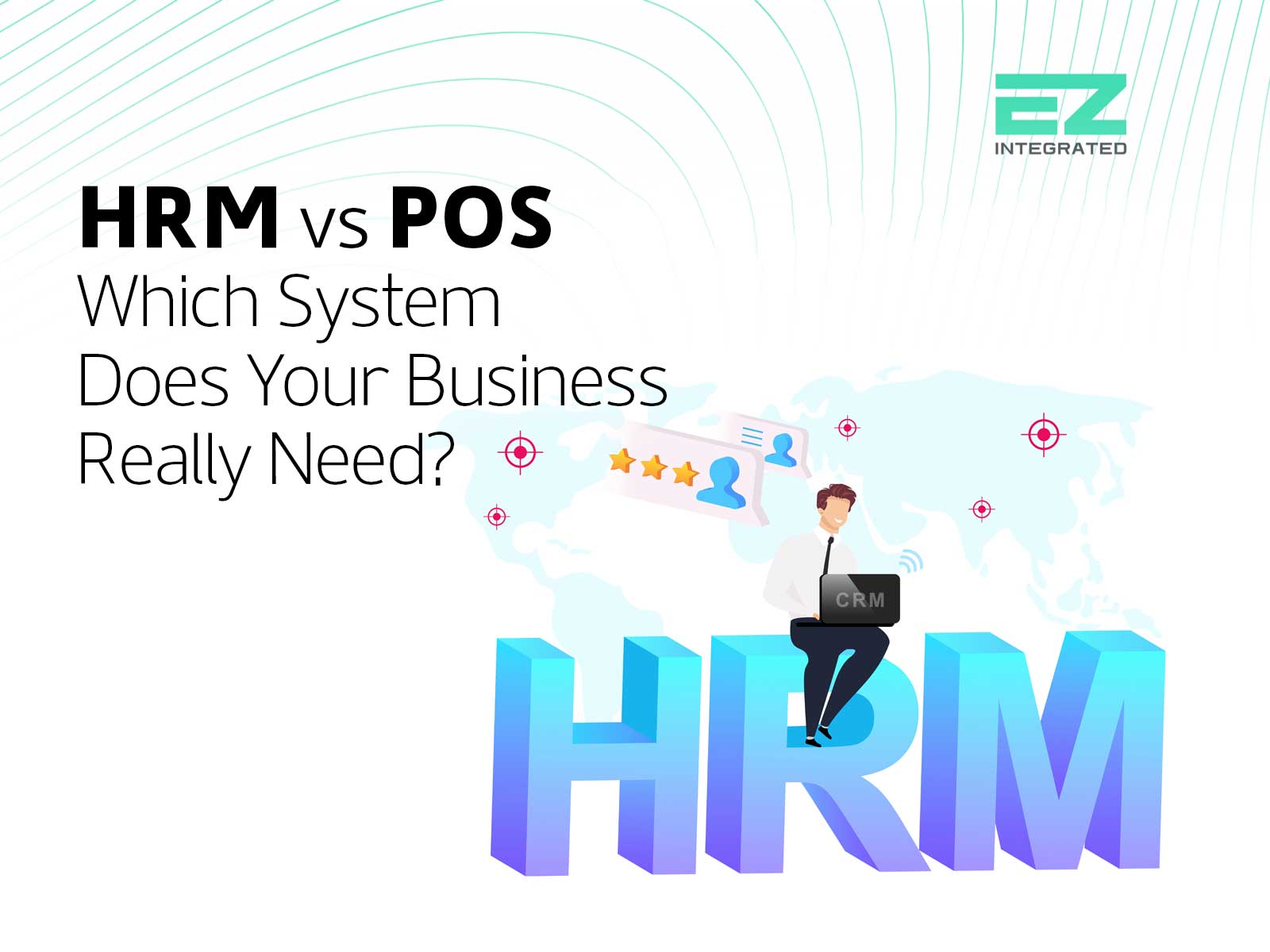HRM vs POS is more than a technical comparison. It is a crucial decision for every business manager, especially with Saudi Arabia’s ongoing shift to mandatory e invoicing and digital compliance.
In this article, we explore the difference between HRM and POS, the purpose of each system, and why HR professionals should care about integration with e-invoicing. We also introduce how EZ Integrated and CODEIT offer complete solutions for compliance and growth.
What Is an HRMS?
A Human Resource Management System (HRMS) manages the relationship between a company and its employees. Its key features include:
- Storing employee data and scheduling tasks
- Managing payroll, benefits, and attendance
- Tracking individual and team performance
- Generating reports for strategic decision-making
Unlike other tools, HRMS focuses on people as valuable assets and ensures labor law compliance and staff efficiency.
What Is a POS System?
A Point of Sale (POS) system is designed for managing direct customer transactions. It includes:
- Registering sales and processing payments
- Tracking inventory in real-time
- Issuing electronic invoices and linking to the FATOORA platform
- Providing sales and performance reports
In Saudi Arabia, POS systems are now central to regulatory compliance, especially under the Integration Phase of mandatory e-invoicing.
Also read: Top Point of Sale Types for Every Business in Saudi Arabia
ERP vs POS: Understanding the Key Differences
To compare ERP vs POS, it helps to understand their core functions. HRMS focuses on managing internal staff and payroll. In contrast, POS handles external sales, inventory, and billing.
Still, the lines between ERP vs POS are beginning to blur. HR managers can use POS sales data to refine shift planning or align bonuses with real-time performance insights.
Why HR Managers Should Understand POS and E-Invoicing
Knowing the link between ERP vs POS helps HR leaders stay aligned with company-wide operations. Here’s how it impacts them directly:
1. Workforce Planning Based on Sales Data
POS insights show peak hours and slow periods, allowing HR to schedule shifts fairly and optimize staffing during high demand.
2. Ensuring Compliance with Saudi Regulations
Integrating HR and sales data supports accurate e-invoicing in line with ZATCA guidelines. This reduces risks of non-compliance and avoids costly penalties.
3. Boosting Team Productivity
Understanding ERP vs POS empowers HR to link employee behavior with sales performance. This leads to incentive plans that raise productivity and staff satisfaction.
Also read: 15 Features to Look for in the Best Point of Sale Software
EZ Integrated and CODEIT: A Unified ERP vs POS Solution
Managing separate systems is no longer enough. That’s why EZ Integrated and CODEIT deliver a seamless solution combining HR, POS, and e-invoicing features.
EZ Integrated Highlights
- Certified e-invoicing provider approved by ZATCA
- Direct API connection with FATOORA platform
- Customized solutions tailored to your business
- Staff training for system optimization
- Ongoing technical support and system stability
CODEIT Features
- Cloud-based POS software for sales and inventory
- Analytics and forecasting tools for better decisions
- Full e-invoicing support aligned with ZATCA
- Centralized management of multiple branches
- Multi-language interface for ease of use
- Why ERP vs POS Integration Matters
With EZ Integrated and CODEIT, you gain the advantages of both systems. You combine the depth of HRMS with the speed and agility of POS, all while meeting ZATCA’s mandatory e-invoicing rules. Contact us today to book a free consultation and discover how our ERP vs POS solution can unlock your business’s full potential.
